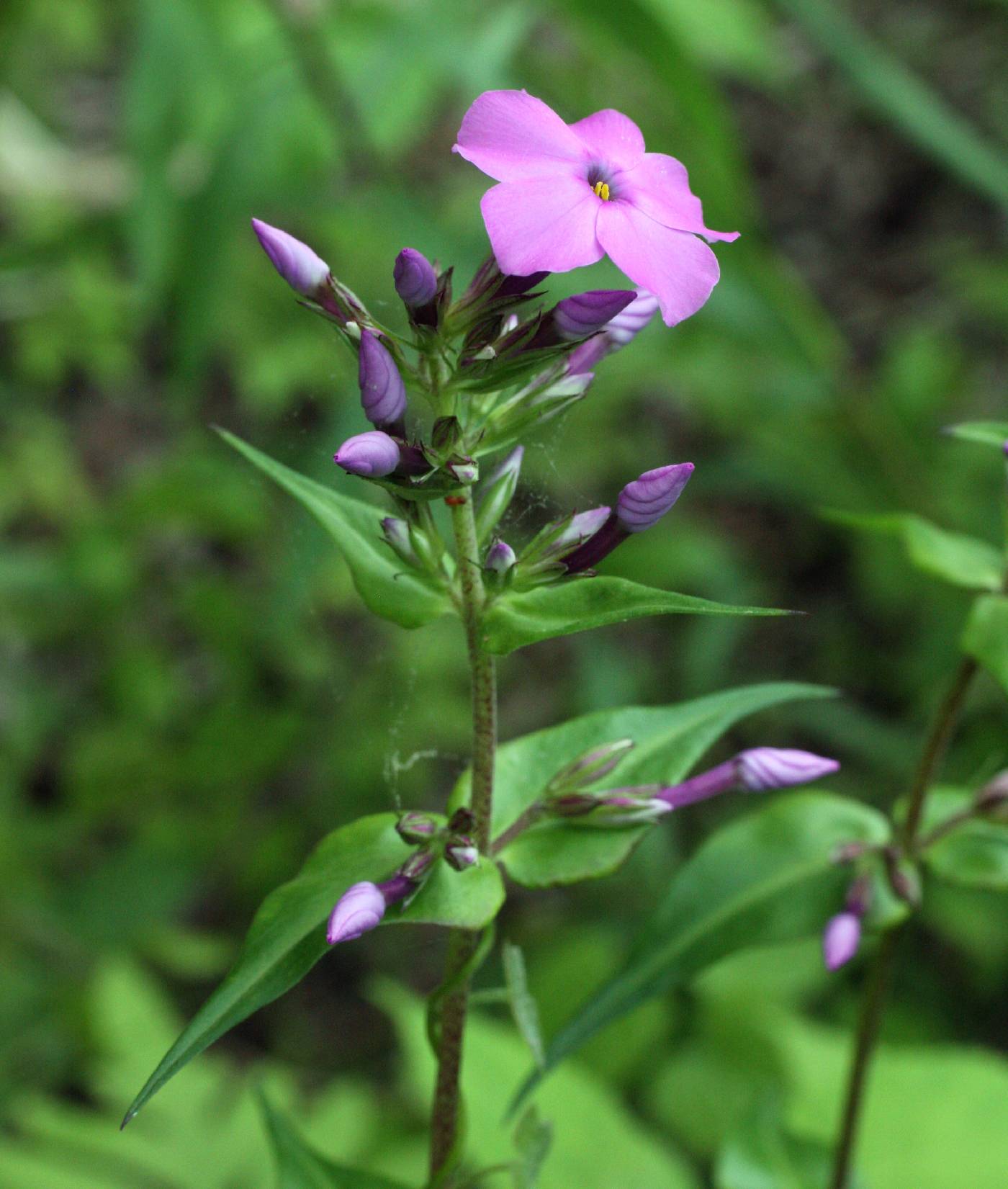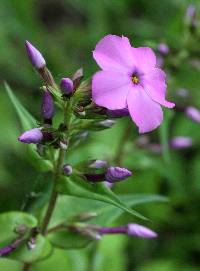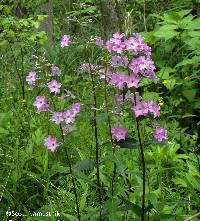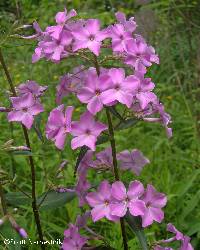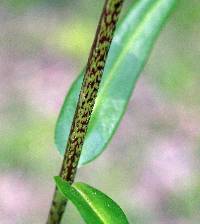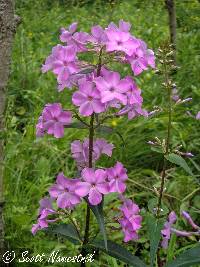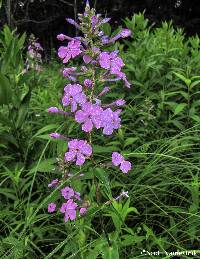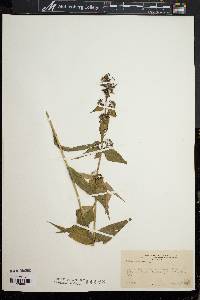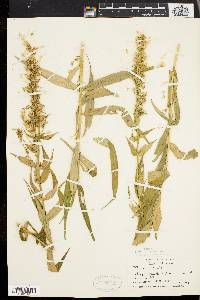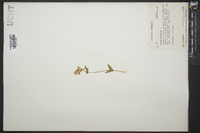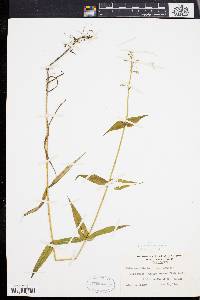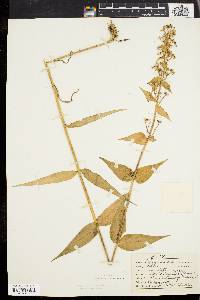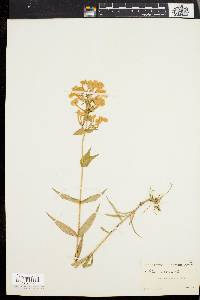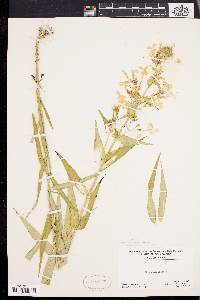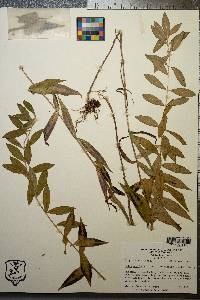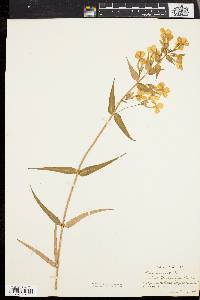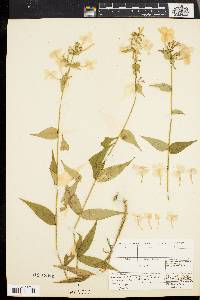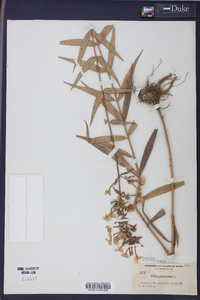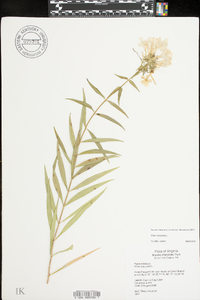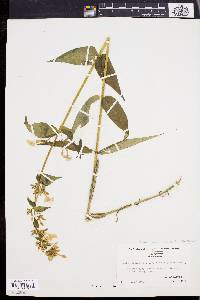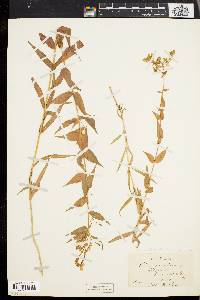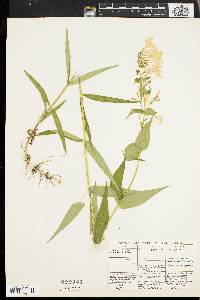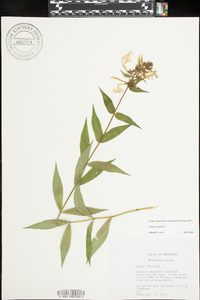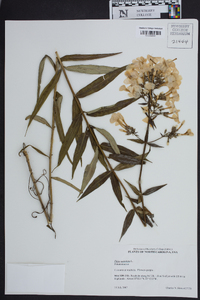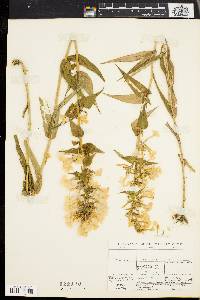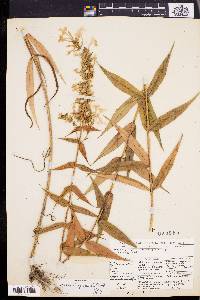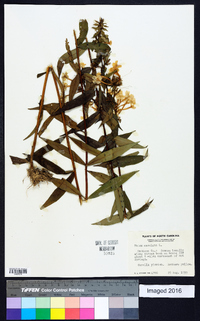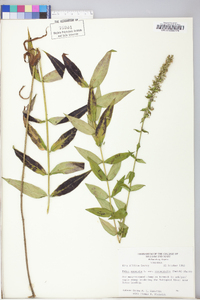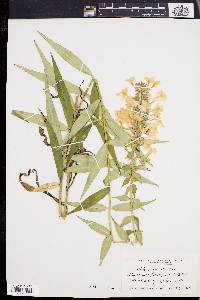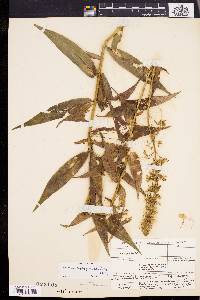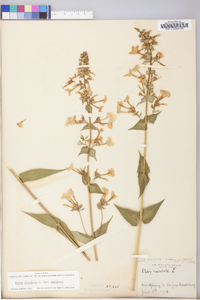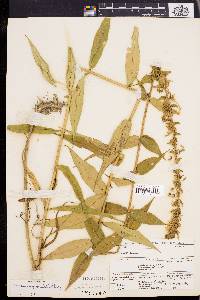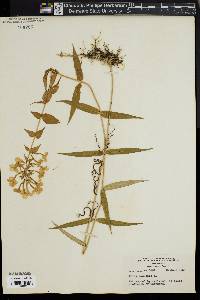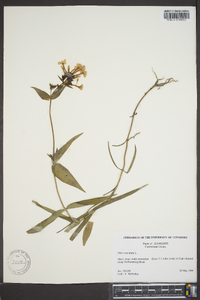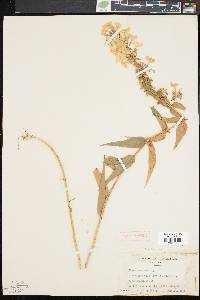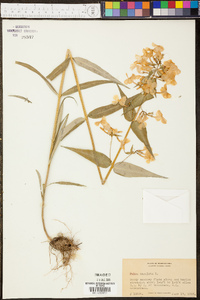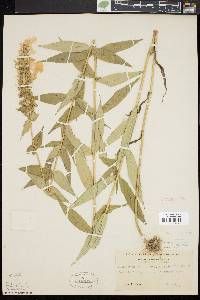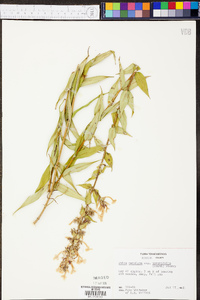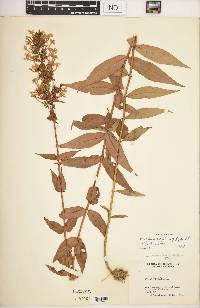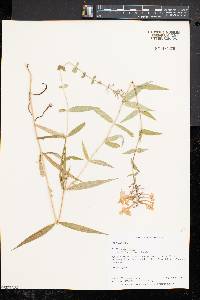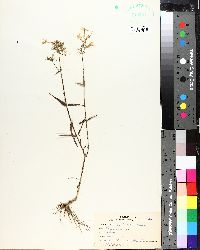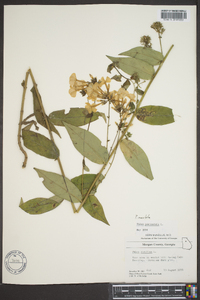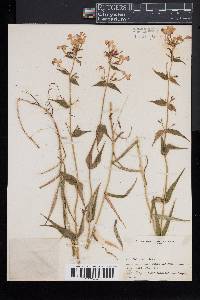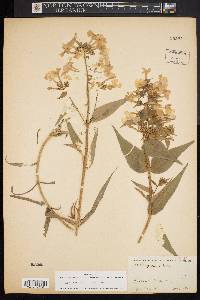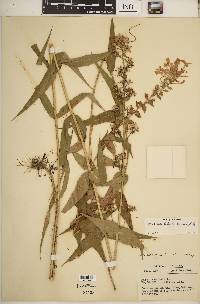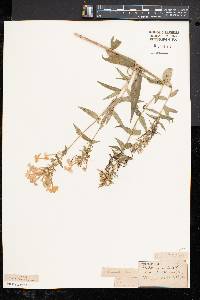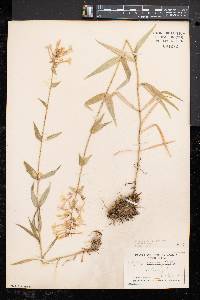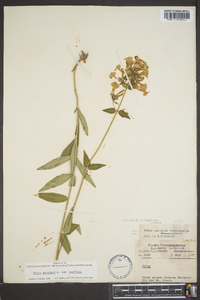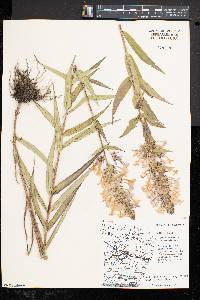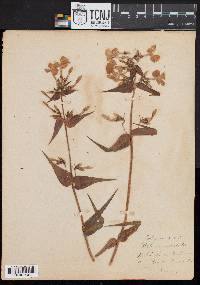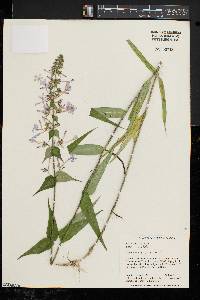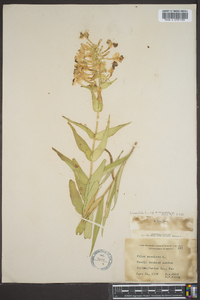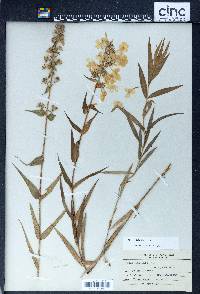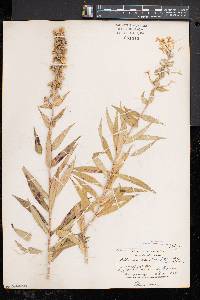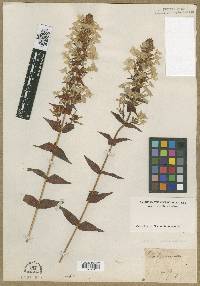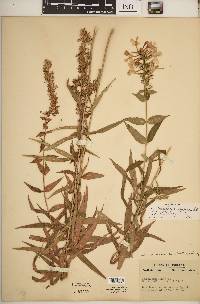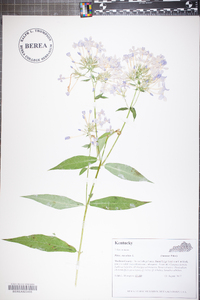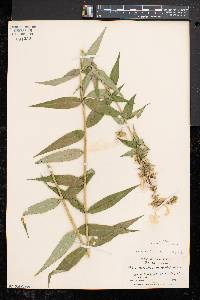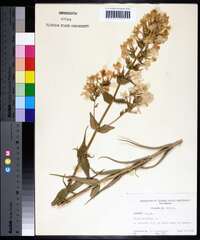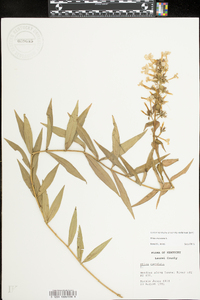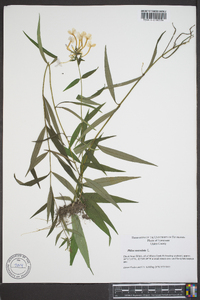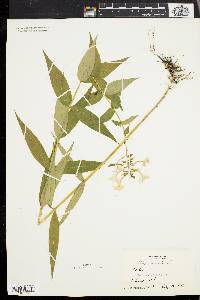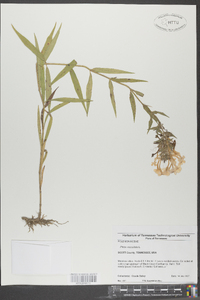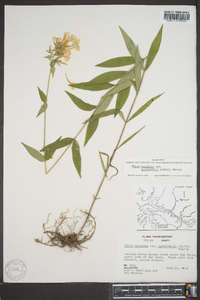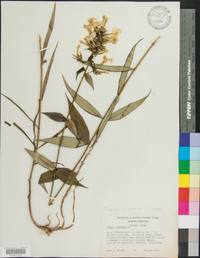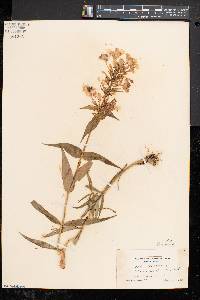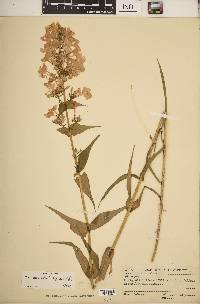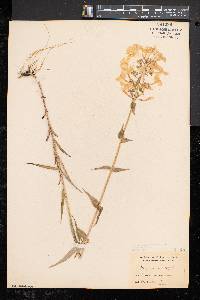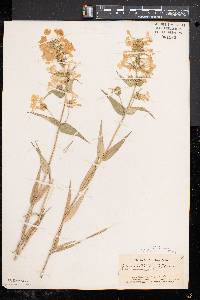
|
|
|
|
Family: Polemoniaceae
Wild Sweetwilliam
|
Perennial herb 40 cm to 1.2 m tall Stem: usually purple-spotted or streaked, and hairless to minutely short-hairy. Leaves: stalkless, opposite, numerous (ten to fifteen pairs), up to 13 cm long (the longest ones near middle of stem), and up to 2.5 cm wide (the widest ones just below inflorescence), with smooth, usually hairless edges, and obscure veins. The lower leaves are linear, while the upper leaves are wider, oblong to egg-shaped, with heart-shaped clasping bases. Inflorescence: a large, often hairy, elongate (at least two times longer than broad), cylindric or narrowly conic, terminal, branched cluster composed of smaller branching clusters, and containing around 100 flowers atop stalks mostly under 0.5 cm long. Flowers: 1.2 - 2.2 cm wide, purple, pink or white, sometimes with a purple ring in the center, radially symmetric, with a slender tube, and abruptly flared lobes. The fragrance of the flowers can vary from intense and sweet, to barely noticeable. Sepals: five, 5.5 - 7.5 mm long overall, but fused for over half their length, then separating into narrow-triangular, long, sharp, stiff-pointed lobes, which are sparsely hairy on the inside, and hairless outside. Petals: five, but fused into a 1.8 - 2.5 cm long tube, then separating into 1 cm long, 1 cm wide, almost rounded lobes with non-toothed, or merely jagged, widened tips. Stamens: five, with filaments attached at different heights along the inside of the petal tube, and about the same length as the petal tube, but not extending far beyond it. Pistil: with a single, three-chambered, superior ovary; and three, elongate (1.5 - 2 cm long, sometimes extending beyond petal tube), fused styles, which separate for only 0.5 - 1 mm before ending in three, linear stigmas. Fruit: a three-valved, three-chambered, egg-shaped capsule with one or several, 3.5 - 6 mm long, ellipsoid seeds per chamber. Rhizome: shallow, slender, non-woody, curving upward into the above ground stem. Similar species: Phlox maculata is most similar to P. glaberrima ssp. interior, but that taxon has a fairly flat, broad, and rounded inflorescence with the lower branches longer stalked than the terminal cluster. Also somewhat similar is P. paniculata, but that species has obviously veined leaves, and also bristly hairs on the leaf edges. The remaining species of Phlox in the Chicago Region either have obvious notched tips on the petals, or very short styles. Flowering: late June to July and sometimes again in late summer through September Habitat and ecology: Rare in the Chicago Region, typically found in our eastern area, where it is native to damp, often calcareous places. Occurence in the Chicago region: native Etymology: Phlox is the Greek word for flame. Maculata means spotted, referring to the spotted or streaked stem. Author: The Field Museum Stems erect, 3-8 dm, usually red-spotted; lvs numerous, lance-linear to lanceolate or narrowly oblong, 5-12 cm; infl of a terminal and several to many axillary cymes, the latter all short-peduncled, forming a subcylindric cluster 5-25 cm; infl densely but minutely hairy, not glandular; cal usually glabrous, 6-8 mm, cor red-purple, 12-22 mm wide; style elongate; 2n=14. Low woods and wet meadows; s. Que. to Va. and in the mts. to Ga., w. to s. Minn., Io., and Mo. June, July. (P. pyramidalis) Gleason, Henry A. & Cronquist, Arthur J. 1991. Manual of vascular plants of northeastern United States and adjacent Canada. lxxv + 910 pp. ©The New York Botanical Garden. All rights reserved. Used by permission. |
|
|
|

